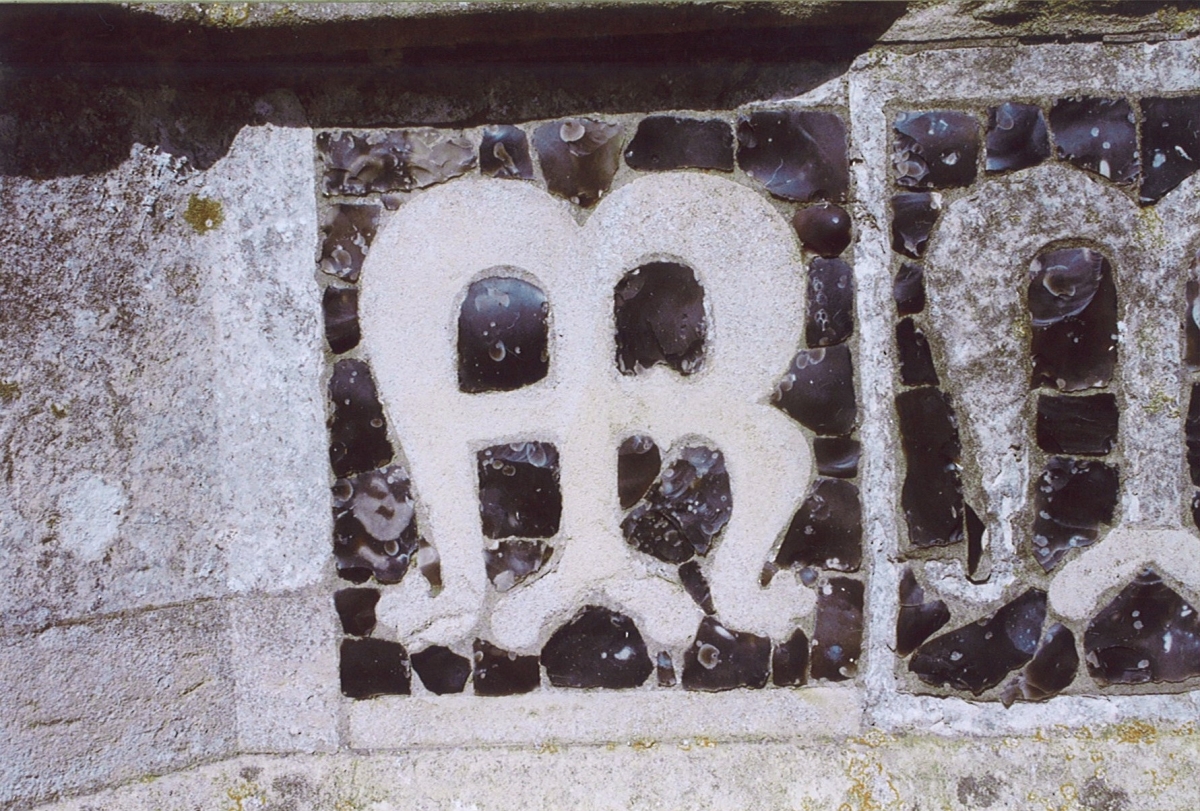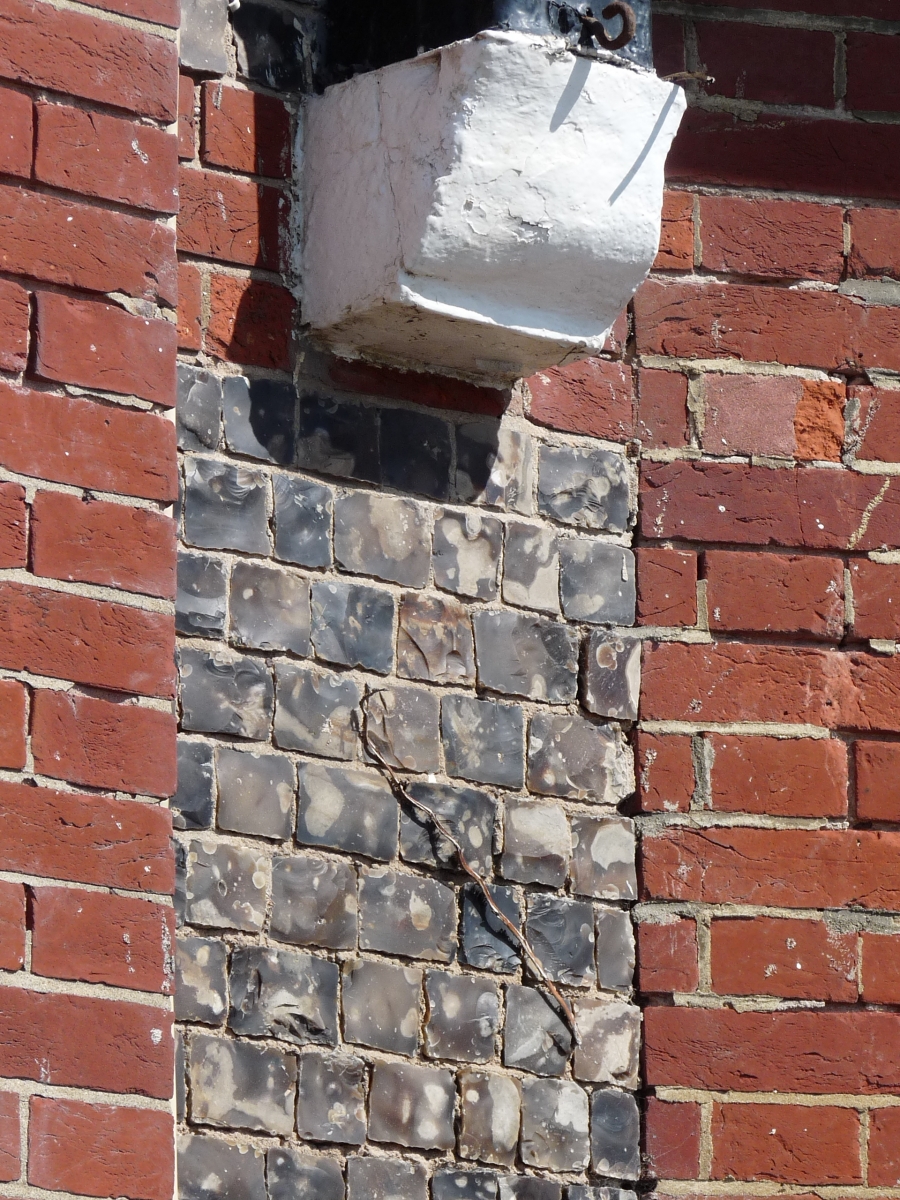The SPAB is frequently asked about flintwork. This article takes the opportunity to review some of the key issues the care and repair of walls constructed from this curious material.
What is flint, how has it been used in building?
Flint is a fine-grained silica, very hard, impervious and occurring typically as small, irregular nodules. When freshly extracted from chalk, these are black with a white crust, but weathered flints – from fields, river-beds, beaches or gravel pits – can vary in colour from blue and grey to yellow, brown and orange.
Flint has been employed for a wide range of building types in southern and eastern England since Roman times. It has been used for thick, rubble-cored walls and, from the 19th century, facing skins on backings of brick or other stone. Walls can be approximately dated by their coursing, mortar composition and whether flints are used whole, fractured or knapped.
What is knapped flint?
Knapped flints are nodules split to achieve a deliberate aesthetic effect rather than those simply fractured, ie broken naturally or crudely severed to reduce them to a convenient size. Knapping involves breaking the flint into workable pieces (‘quartering’) and, with finer work, chipping away (‘flaking’) to even the surface and square the end.
‘Flushwork’ comprises knapped flint set on the same plane (ie flush) as the face of dressed stone. It may be either flint infillings between stone slabs mortared onto a wall (creating, for example, chequer patterns and bands) or inlays of flint fitted into small, carefully-shaped recesses in stone slabs (to form trefoil-headed panels or heraldic shields etc). Flushwork tracery reached its apogee during the 15th century on East Anglian churches.

What problems might arise from flint construction?
Problems are attributable to the impervious nature of flint, its unwieldy shape and small size. These characteristics can give rise to poor bonding that may be weakened further by rain penetration due to a lack of maintenance. Inappropriate repair methods and materials can also contribute to deterioration.
Problems range from the localised displacement of flints to loosely-bonded dressings and the detachment of facing flintwork from rubble cores or backings of stone or brick. Where there is doubt over the stability of a wall, a structural engineer should be consulted.
Flint and brick wall
Can flintwork be repaired without rebuilding?
Where facings and dressings are poorly bonded or walls fractured, it is usually possible for an effective repair to be undertaken that avoids large-scale rebuilding and the loss of historic fabric. A range of techniques involving the use of non-ferrous ties or masonry bonders can be employed. Associated grouting may also be required, whereby voids and fractures are filled with liquid mortar. The difficulty of using proprietary methods necessitating drilling means they are generally best avoided.
Where work to old flintwork is being considered, the SPAB may be able to suggest the names of suitable contractors and professionals or advise on appropriate courses.
Because flint is durable, presumably a hard cement mortar can be used?
No, this is a big misconception. Dense, cement-rich mortars shrink on drying, and fine capillary cracks develop that admit water and cause damp internally. This can accelerate decay and possibly lead to structural failure in a wall.
Lime-based mortars give the best results. Their porous nature allows walls to ‘breathe’, moisture to evaporate and fine cracks to ‘heal’. While a non-hydraulic lime may be appropriate for repointing flintwork, a mix with a faster and harder set is likely to be desirable for rebedding flints and copings, or filling cracks. This can be achieved by adding pozzolans (materials such as dust from soft and low-fired bricks) or using a natural hydraulic lime (strong hydraulic limes, however, should be avoided).
Further Reading
English Heritage (2012) Stone, Practical Building Conservation, Farnham: Ashgate Publishing Ltd
Lodge, D and Wright, A (2017) Care and Repair of Flint Walls, 2nd edition, SPAB Technical Guide, London: SPAB
Society for the Protection of Ancient Buildings (2017) Repointing Stone and Brick Walling, SPAB Technical Guide, 4th edition, London: SPAB
Technical advice line
Get involved

